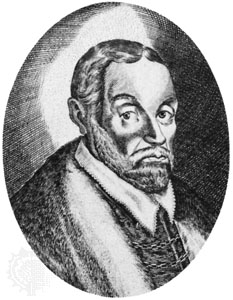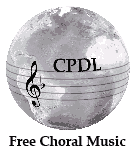Life
Very little is known about his early life. Probably born in Ferrara, he became presbyter ("canonico") at the Congregazione di S Giorgio d'Alga in Venice, and author of sacred poems as well as secular texts for librettos. One of his madrigals, Sí ch'io vorrei morire, was set to music by Claudio Monteverdi in his Fourth Book of Madrigals. Filippo Bonaffino also set some of his work to music in book of madrigals.

Ferrara is a city and comune in Emilia-Romagna, northern Italy, capital of the Province of Ferrara. As of 2016 it had 132,009 inhabitants. It is situated 44 kilometres northeast of Bologna, on the Po di Volano, a branch channel of the main stream of the Po River, located 5 km north. The town has broad streets and numerous palaces dating from the Renaissance, when it hosted the court of the House of Este. For its beauty and cultural importance, it has been designated by UNESCO as a World Heritage Site.
In the New Testament, a presbyter is a leader of a local Christian congregation. The word derives from the Greek presbyteros, which means elder or senior. The Greek word episkopos literally means overseer; it refers exclusively to the office of bishop. Many understand presbyteros to refer to the bishop functioning as overseer. In modern Catholic and Orthodox usage, presbyter is distinct from bishop and synonymous with priest. In predominant Protestant usage, presbyter does not refer to a member of a distinctive priesthood called priests, but rather to a minister, pastor, or elder.

Venice is a city in northeastern Italy and the capital of the Veneto region. It is situated on a group of 118 small islands that are separated by canals and linked by over 400 bridges. The islands are located in the shallow Venetian Lagoon, an enclosed bay that lies between the mouths of the Po and the Piave rivers. In 2018, 260,897 people resided in the Comune di Venezia, of whom around 55,000 live in the historical city of Venice. Together with Padua and Treviso, the city is included in the Padua-Treviso-Venice Metropolitan Area (PATREVE), which is considered a statistical metropolitan area, with a total population of 2.6 million.
In the Dizionario Storico degli Uomini Ferraresi [1] by author Luigi Ughi, the entry for Maurizio Moro reads: "He was also a man of erudition and a good Italian poet who lived in the second half of the 16th century. Some of his works can be found in collections of that time and in selections of poems by Ferrara poets." [2]
Notes
- ↑ ed. Rinaldi, Ferrara, 1804; volume II, pag. 80
- ↑ "Fu anch'egli uomo d'erudizione e buon poeta italiano vissuto oltre la metà del sec. XVI. Si hanno alcune delle sue opere stampate nelle raccolte di quel tempo, e nelle rime scelte de' poeti ferraresi."
Giorgio Bassani was an Italian novelist, poet, essayist, editor, and international intellectual.

Giovanni Battista Guarini was an Italian poet, dramatist, and diplomat.
Giaches de Wert was a Franco-Flemish composer of the late Renaissance, active in Italy. Intimately connected with the progressive musical center of Ferrara, he was one of the leaders in developing the style of the late Renaissance madrigal. He was one of the most influential of late sixteenth-century madrigal composers, particularly on Claudio Monteverdi, and his later music was formative on the development of music of the early Baroque era.

Cyprien «Cipriano» de Rore was a Franco-Flemish composer of the Renaissance, active in Italy. Not only was he a central representative of the generation of Franco-Flemish composers after Josquin des Prez who went to live and work in Italy, but he was one of the most prominent composers of madrigals in the middle of the 16th century. His experimental, chromatic, and highly expressive style had a decisive influence on the subsequent development of that secular music form.
Pomponio Nenna was a Neapolitan Italian composer of the Renaissance. He is mainly remembered for his madrigals, which were influenced by Gesualdo, and for his polychoral sacred motets, posthumously published as Sacrae Hebdomadae Responsoria in 1622.

Antonio Randa was an Italian painter of the classicist period, active in Ferrara, Modena, Rovigo, Florence, Comacchio and his native Bologna.
Jacquet de Berchem was a Franco-Flemish composer of the Renaissance, active in Italy. He was famous in mid-16th-century Italy for his madrigals, approximately 200 of which were printed in Venice, some in multiple printings due to their considerable popularity. As evidence of his widespread fame, he is listed by Rabelais in Gargantua and Pantagruel as one of the most famous musicians of the time, and the printed music for one of his madrigals appears in a painting by Caravaggio.
Giovanni Domenico da Nola was an Italian composer and poet of the Renaissance.
Giovanni Battista Bassani was an Italian composer, violinist, and organist.
Angelo Berardi was an Italian music theorist and composer.

Stefano de Maza Gatto also known as Stefano Felis, was a Neapolitan Italian composer of the Renaissance, and the collaborator and probable teacher of composer Pomponio Nenna. He composed madrigals, sacred motets, and choral settings of the Mass.
The Acqui Award of History is an Italian prize. The prize was founded in 1968 for remembering the victims of the Acqui Military Division who died in Cefalonia fighting against the Nazis. The jury is composed of seven members: six full professors of history and a group of sixty (60) ordinary readers who have just one representative in the jury. The Acqui Award Prize is divided into three sections: history, popular history, and historical novels. A special prize entitled “Witness to the Times,” given to individual personalities known for their cultural contributions and who have distinguished themselves in describing historical events and contemporary society, may also be conferred. Beginning in 2003 special recognition for work in multimedia and iconography--”History through Images”—was instituted.

Luigi Groto, also called Cieco d'Adria or Cieco D'Hadria, was a blind Italian poet, lutenist, playwright and actor. Groto was born in Veneto and lost his sight eight days after birth. He studied philosophy and literature with such success that at the age of 15 he was already a public orator. He was often in Venice as an envoy from Veneto, and entertained with public performances of his songs. In 1565 he was appointed president of the newly founded Academy of Illustrati of Adria. He died in Venice, having just come from the theater where he had played the role of the blind King Oedipus. In 1623 Filippo Bonaffino set some of his poetry to music in a book of madrigals.
Giorgio De Vincenzi, was an Italian painter and etcher. He was a versatile artist, using diverse techniques and specialised in landscapes and portraiture.
Paolo Isnardi was a late-Renaissance choirmaster and composer.
Maurizio Trifone is an Italian linguist and lexicographer.
Emilio Isgrò is an Italian artist and writer, known for his use of the erasure technique in his art works.

Giovanni Antonio Lecchi or Giannantonio Lecchi was an Italian jesuit and mathematician.
Provesano is a frazione of the comune of San Giorgio della Richinvelda, in the province of Pordenone in Friuli-Venezia Giulia, Italy. The name Provesano is of Roman origin; it consists of Probus or (Publicius) and the suffix –anu, indicating the landed property.

Antonio Mongitore was a Sicilian presbyter, historian and writer, known for his works about the history of Sicily. He was also canon of the cathedral chapter of Palermo.











